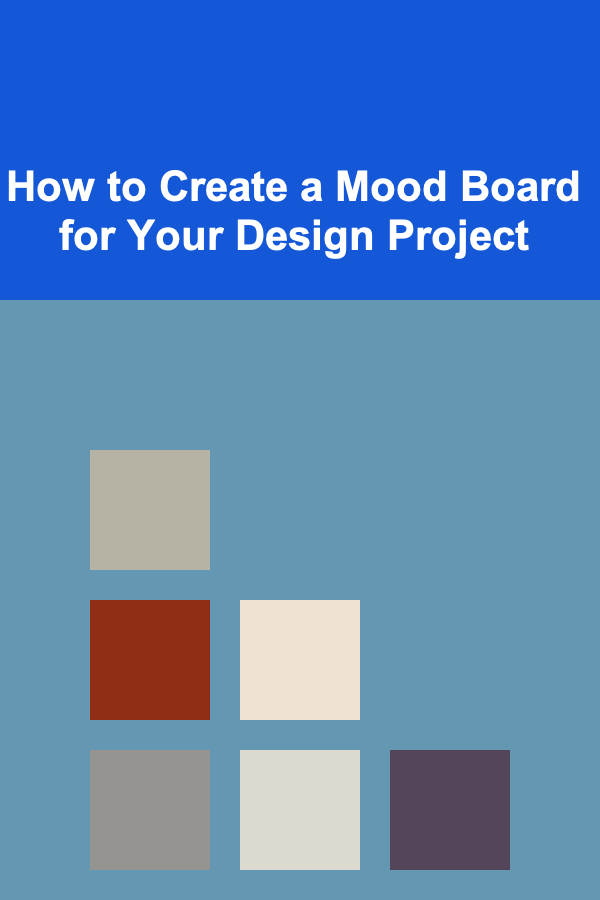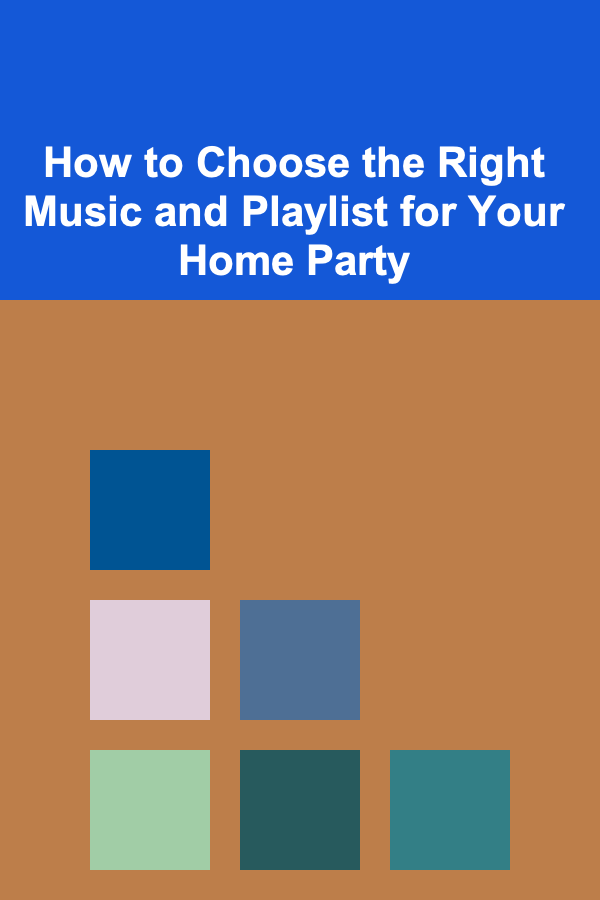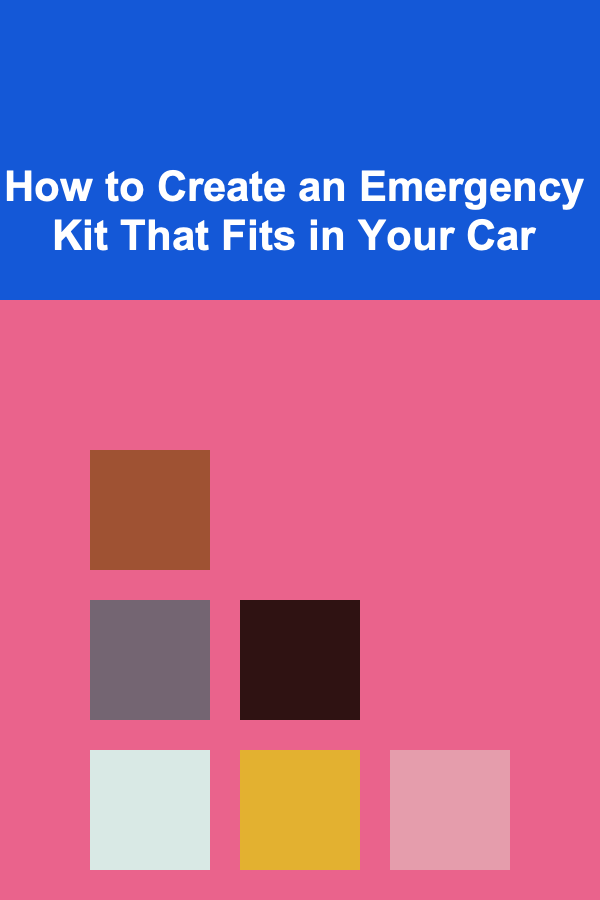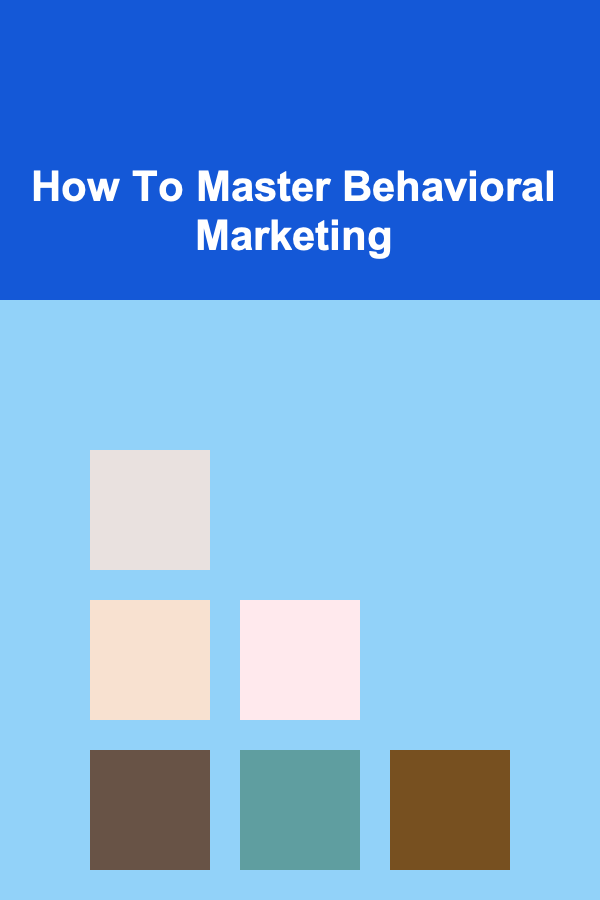
How to Create a Mood Board for Your Design Project
ebook include PDF & Audio bundle (Micro Guide)
$12.99$7.99
Limited Time Offer! Order within the next:

Design is a powerful tool for communication, and mood boards are a foundational step in visualizing and organizing the conceptual elements of any design project. Whether you are working on branding, interior design, fashion, or any other creative field, a mood board helps align the vision and serves as a visual guide throughout the design process. In this article, we'll explore what mood boards are, how to create one, and how they can enhance your design work.
What is a Mood Board?
A mood board is a visual collage or collection of images, colors, textures, typography, and other elements that help convey the intended mood or style of a project. The purpose of a mood board is to visually communicate the tone, feel, and aesthetic that the designer envisions for the project. Think of it as a visual roadmap that inspires creativity and guides decision-making throughout the design process.
Mood boards can take many forms: physical boards filled with cutouts, digital boards created in graphic design software, or even Pinterest boards. They provide a tangible representation of abstract concepts, allowing designers, clients, and collaborators to align their expectations and understand the vision behind the design.
The Importance of Mood Boards in the Design Process
Mood boards serve several critical functions throughout a design project:
- Clarify Vision: A mood board helps clarify the designer's vision by organizing abstract ideas into visual representations. It enables the designer to see how different elements fit together and how they contribute to the overall mood and tone.
- Inspire Creativity: The process of collecting images, textures, and other elements for the mood board can spark new ideas and encourage creative thinking. It helps the designer step back from the technical aspects and focus on the emotional and artistic components of the project.
- Communicate with Clients and Team Members: A mood board acts as a powerful tool for communicating ideas with clients, stakeholders, and team members. It allows everyone involved in the project to get a clear understanding of the intended direction, ensuring alignment and reducing misunderstandings.
- Guide Decision-Making: As a project progresses, a mood board serves as a reference point, helping designers make decisions about color schemes, typography, layout, and other design elements. It keeps the project cohesive and ensures that the design stays true to the original vision.
- Simplify the Design Process: By gathering inspiration and visual elements upfront, mood boards can save time during the design process. Instead of reinventing the wheel for every decision, designers can refer back to the mood board to maintain consistency and streamline their workflow.
Types of Mood Boards
Mood boards can vary depending on the type of design project and the medium used. Here are some common types of mood boards:
1. Physical Mood Boards
A physical mood board is a tangible, often handmade, collection of images, fabric swatches, color chips, textures, and other physical materials. This type of mood board is typically created using a corkboard, foam board, or poster board. Designers can physically cut out images from magazines, printouts, or use samples that are relevant to the project.
Pros:
- Highly tactile and hands-on.
- Ideal for projects that involve materials like fabrics, textures, or physical items.
- Allows for quick, intuitive changes by physically moving elements around.
Cons:
- Less convenient for collaboration, especially for remote teams.
- Limited to physical materials, which can be cumbersome to manage.
2. Digital Mood Boards
Digital mood boards are created using design software like Adobe Illustrator, Photoshop, or online tools like Canva, Pinterest, or Milanote. They allow designers to assemble digital assets, such as stock images, graphics, color palettes, and fonts.
Pros:
- Easy to share and collaborate with others, especially for remote teams.
- Offers flexibility in terms of layout and design.
- Easily editable and scalable.
Cons:
- Can feel less personal compared to a physical board.
- Requires digital assets, which may involve licensing or finding free resources.
3. Pinterest Mood Boards
Pinterest has become a popular platform for curating mood boards, particularly for digital and lifestyle design projects. By pinning images, color palettes, and inspiration from across the web, designers can create mood boards that are easy to update and share with others.
Pros:
- Simple and free to use.
- A vast repository of images from various sources.
- Great for inspiration and visual research.
Cons:
- Less customization in terms of layout.
- Limited control over image quality and copyright.
4. Interactive or Animated Mood Boards
For more advanced design projects, some designers may create interactive or even animated mood boards. These boards often use web design tools or video editing software to add interactivity or motion, bringing the mood board to life in a more dynamic way.
Pros:
- Engaging and immersive experience.
- Effective for presenting designs in a more interactive format.
Cons:
- Time-consuming to create.
- Requires technical skills or access to specialized tools.
How to Create a Mood Board
Creating a mood board involves a series of steps that can help you organize your ideas and present your vision. The process can be broken down into the following stages:
Step 1: Define Your Project Goals and Concept
Before you start gathering images and inspiration, it's important to clearly define the goals and concept of the project. Ask yourself:
- What is the purpose of the design? (e.g., brand identity, website design, product packaging, etc.)
- Who is the target audience?
- What message or emotion should the design convey?
- What style or aesthetic fits the project?
Having a clear understanding of the project will ensure that the mood board reflects the right mood and aesthetic, making it easier to select the appropriate visual elements.
Step 2: Gather Inspiration
Once you have a clear vision of your project, the next step is to gather inspiration. This is where the creative fun begins! Some ways to find inspiration include:
- Online Resources: Browse websites, blogs, and online platforms like Pinterest, Behance, or Dribbble for inspiration.
- Magazines and Books: Flip through magazines, fashion or design books, or even old catalogs for visual inspiration.
- Nature and Surroundings: Sometimes, the best ideas come from the world around you. Take a walk outside or observe your environment for natural color schemes and textures.
- Personal Experiences: Think about your personal aesthetic preferences, experiences, or memories that could help inspire the design.
As you gather images and ideas, save them to a folder or platform where you can easily access them later.
Step 3: Select Key Visual Elements
Once you have collected a variety of inspiration, it's time to narrow down your choices. Focus on selecting key visual elements that represent the core of your design concept. This could include:
- Color Palette: Choose a set of colors that reflect the mood and tone of your project.
- Textures and Patterns: Select textures or patterns that complement the overall aesthetic.
- Typography: If applicable, consider including font styles that resonate with the project's concept.
- Images and Graphics: Pick images that convey the desired emotion, whether it's elegance, simplicity, vibrancy, or nostalgia.
Remember, less is often more. A cluttered mood board can dilute the impact of the message. Select only the most relevant and impactful visuals to avoid overwhelming the viewer.
Step 4: Organize Your Mood Board
Once you have your visual elements, it's time to start assembling the mood board. Begin by grouping similar items together, such as placing all images in one area, colors in another, and typography samples in yet another section.
For digital mood boards, most design software will allow you to adjust the layout and position of each element. Feel free to experiment with different arrangements until you achieve a composition that feels balanced and aligned with your vision.
Step 5: Edit and Refine
As you work through the layout, make sure the mood board is cohesive and easy to understand. Ensure that the colors, images, and typography work well together and reinforce the overall concept.
If you're working on a physical board, you can always move elements around until the composition feels right. If you're working digitally, try different arrangements and don't hesitate to remove any elements that don't quite fit.
Step 6: Share and Collaborate
Once the mood board is complete, share it with clients, colleagues, or collaborators. The feedback you receive can help refine your vision and ensure everyone is aligned. Whether you're presenting the mood board for approval or simply using it as a reference, it will serve as a valuable tool throughout the design process.
Tips for an Effective Mood Board
- Be Selective: Don't overcrowd your mood board with unnecessary images or colors. Focus on what truly represents the mood and style you're going for.
- Stay Consistent: Keep a consistent style throughout your mood board. Whether you're going for a minimalist, vintage, or modern look, ensure that all the elements align with the overall aesthetic.
- Consider the Audience: Remember to keep the target audience in mind when selecting visuals. What appeals to one demographic may not resonate with another.
- Use High-Quality Images: Whether you're working digitally or physically, high-quality images and materials will make your mood board look more professional and visually appealing.
- Leave Room for Flexibility: While the mood board sets the tone, be open to adjustments during the design process. Sometimes the vision evolves as the project progresses.
Conclusion
Creating a mood board is a powerful and essential part of the design process. It helps establish a visual direction, inspires creativity, and facilitates communication between designers and clients. Whether you opt for a physical or digital mood board, the key is to select visual elements that embody the mood, style, and message of your project. By following the steps outlined in this article and keeping these tips in mind, you can create a mood board that will serve as a valuable tool throughout your design journey.

How to Choose the Right Music and Playlist for Your Home Party
Read More
How to Create an Emergency Kit That Fits in Your Car
Read More
How To Implement Direct Mail Marketing
Read More
How To Master Behavioral Marketing
Read More
How to Soundproof a Basement for Music and Movie Lovers
Read More
How to Track Income as a Consultant: A Comprehensive Guide
Read MoreOther Products

How to Choose the Right Music and Playlist for Your Home Party
Read More
How to Create an Emergency Kit That Fits in Your Car
Read More
How To Implement Direct Mail Marketing
Read More
How To Master Behavioral Marketing
Read More
How to Soundproof a Basement for Music and Movie Lovers
Read More